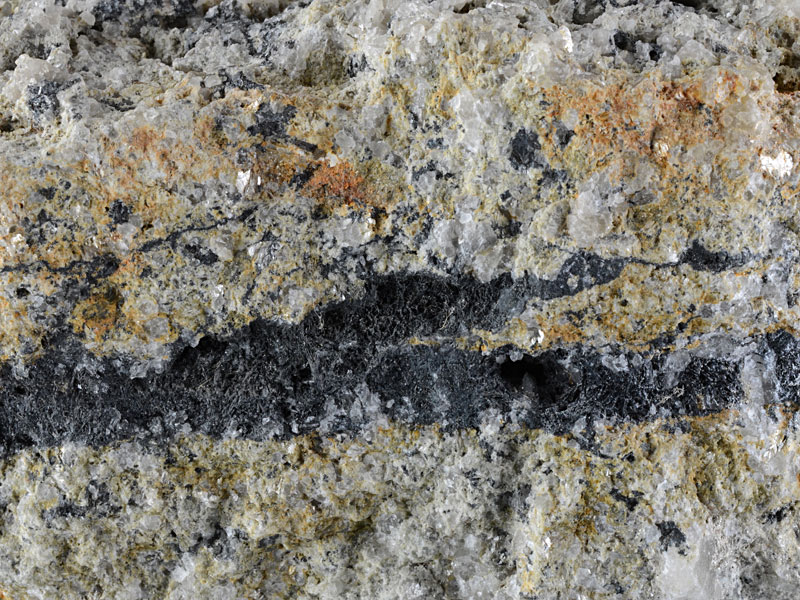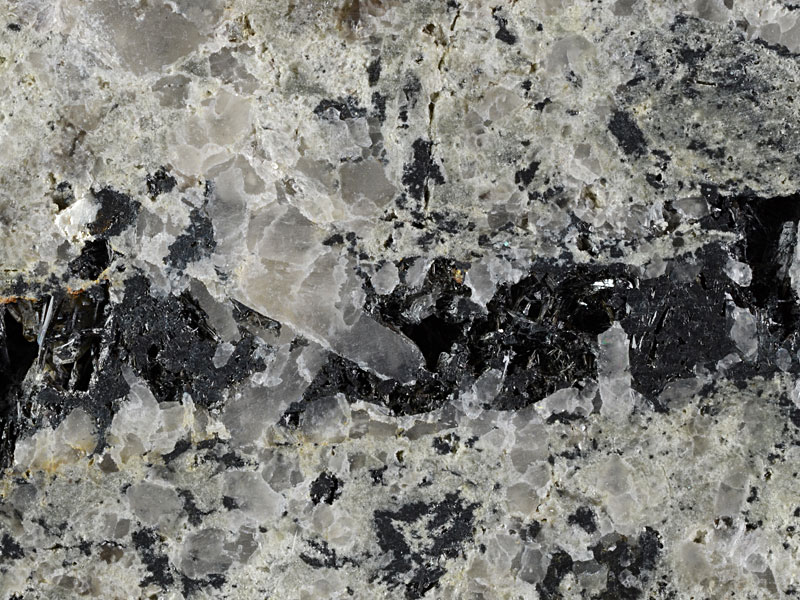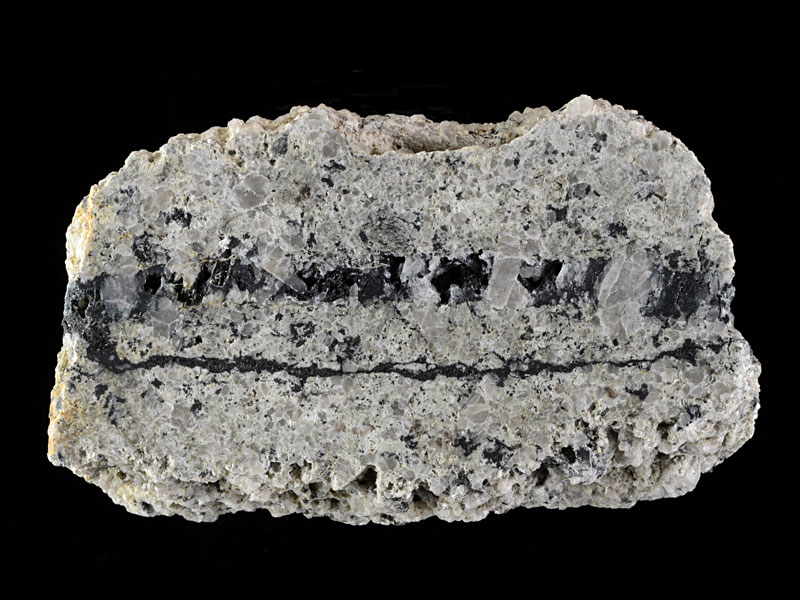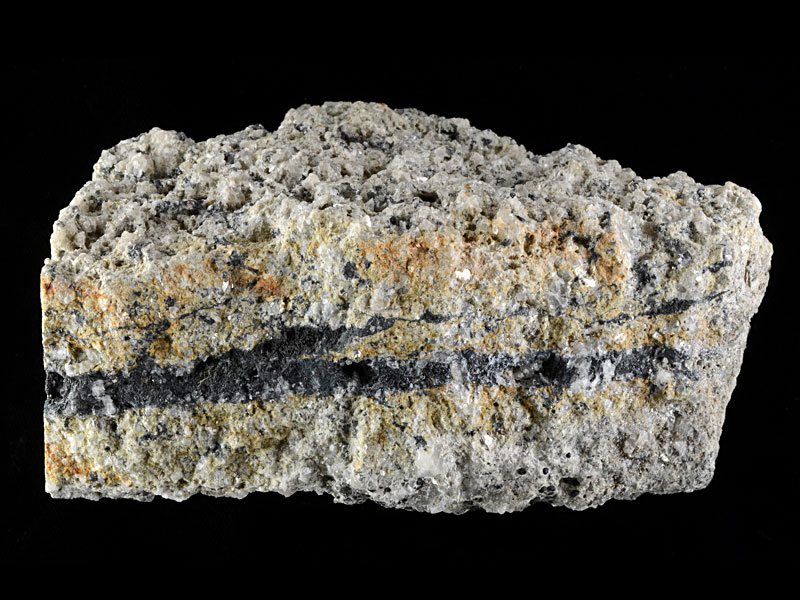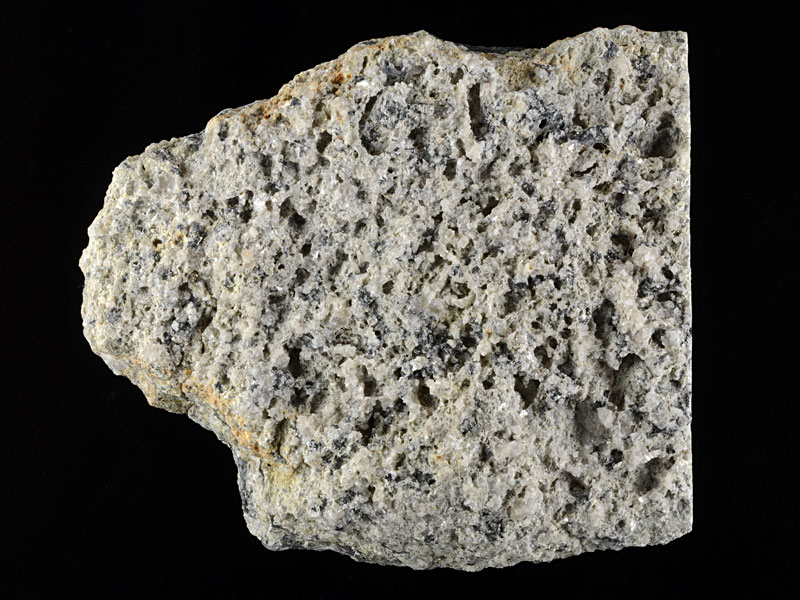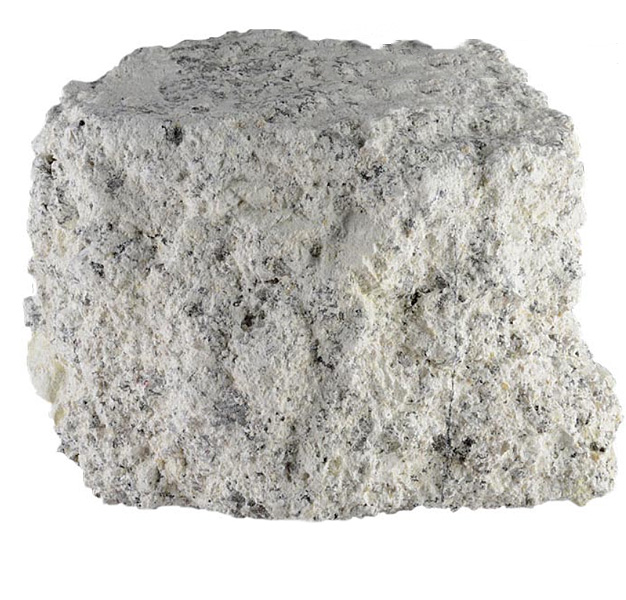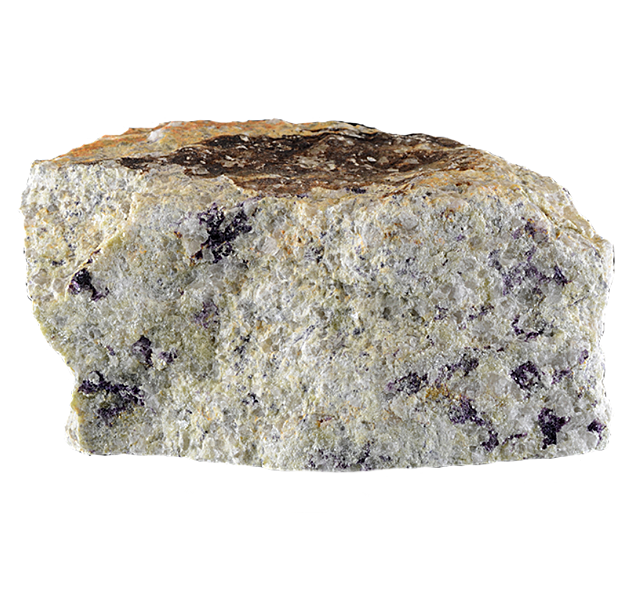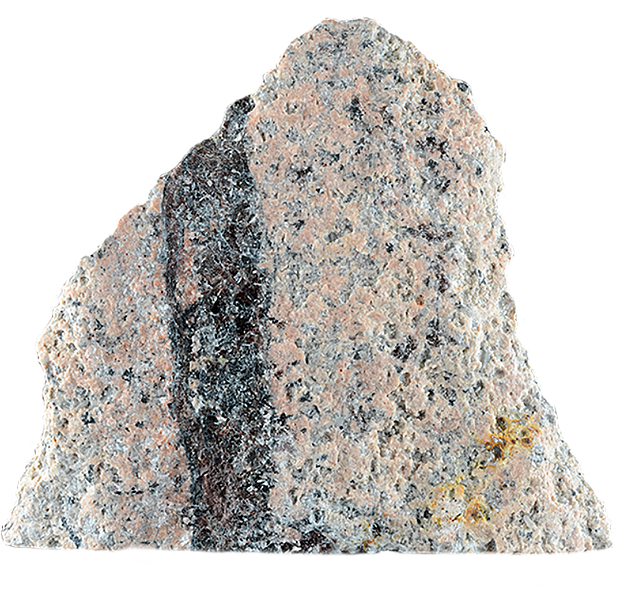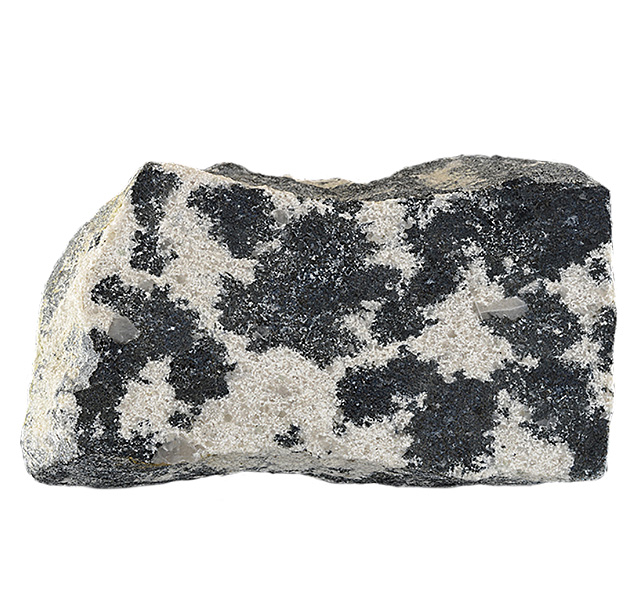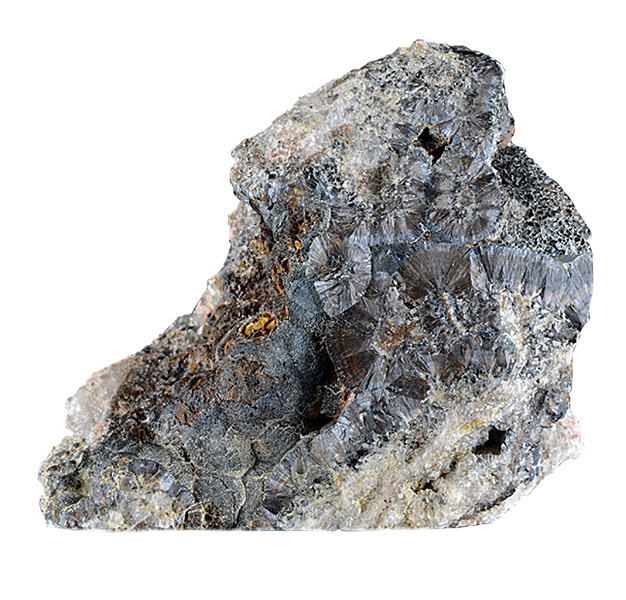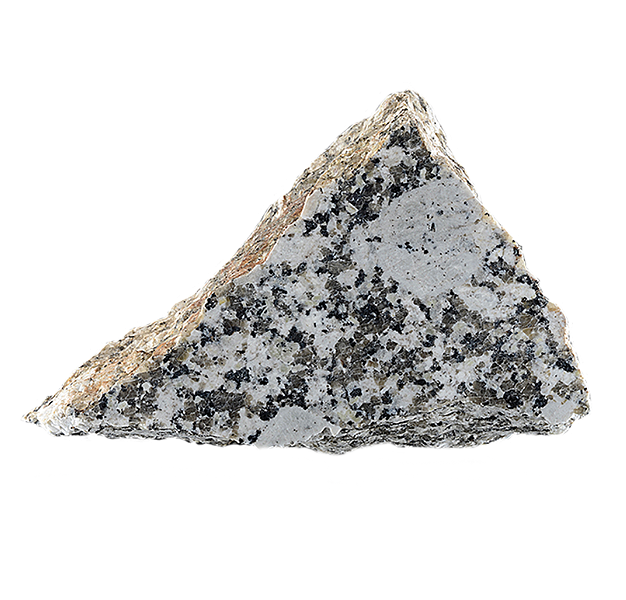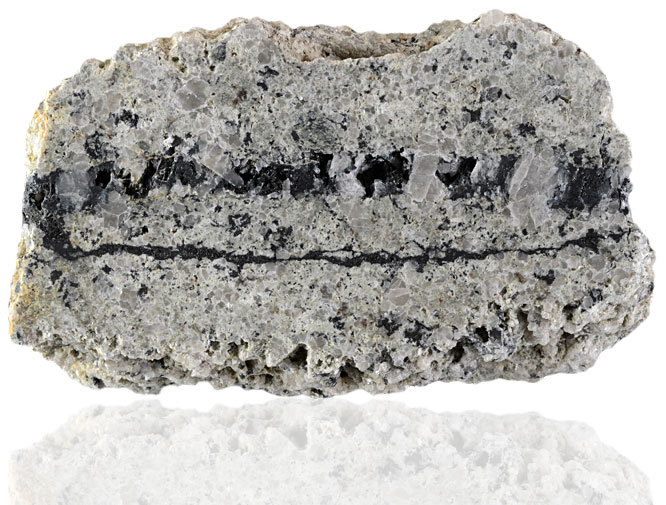
Fact sheet
This sample comes from reclaimed land near the village of Trethurgy, close to the giant Carclaze china clay pit, St Austell, Cornwall. The rock is a hydrothermally altered granite cut by a cassiterite bearing tourmaline vein that formed as boron-rich late-stage magmatic-hydrothermal fluids from which the tourmaline crystallised, also carried tin. It is from this paragenesis that the entire tin industry of Cornwall is based - an industry that can trace its beginnings from Roman times or possibly even earlier.
The thin section shows a coarse grained igneous texture with large grains of quartz, muscovite mica, and altered plagioclase feldspar. Blue/brown igneous tourmaline is present in the granitic portion of the rock but the majority of the tourmaline grains are found in the vein. This hydrothermal tourmaline is darker in colour with blue/brown pleochroism and the vein also contains cassiterite (tin oxide), distinguished by its higher relief and dark brown colour, although unlike many oxides, it is not opaque.
A case study of the St Austell granite complex in Cornwall, England, illustrating the range of rocks associated with a granite intrusion. The earliest part of the complex is a siderophyllite (biotite) granite containing muscovite and tourmaline typical of a SW England granite, with many primary magmatic features.
This early intrusion was followed by the intrusion of an evolved volatile-rich magma which was the driving force behind a series of intense hydrothermal processes as volatiles escaped from this magma and helped to establish an extensive alteration halo (aureole). Boron, fluorine and lithium (as well as water) played major roles in the formation of the second intrusion and in the associated hydrothermal processes. Igneous activity lasted around 18 million years from 282 Ma (siderophyllite granite) to 265 Ma (fluorite granite).
